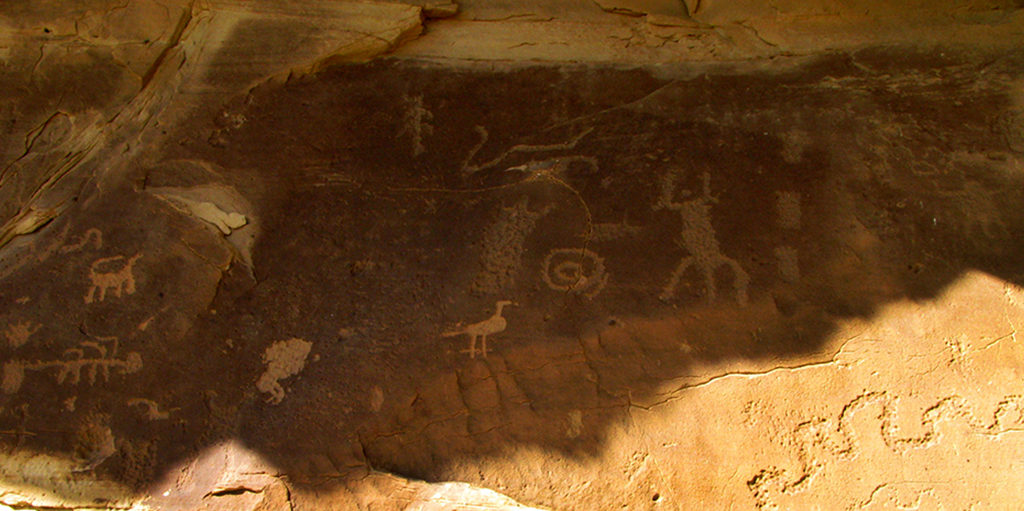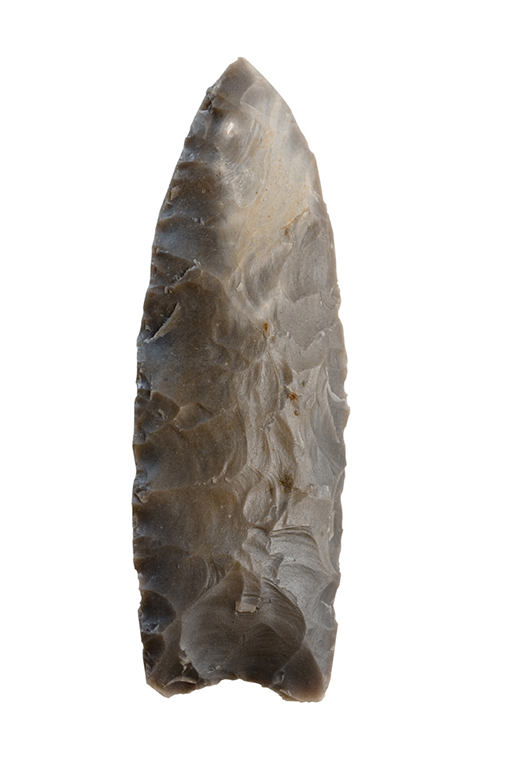The History of New Mexico
Collapse
Expand
-
Chapter 2: New Mexico's First Peoples
- New Mexico's First Peoples
- Recovering First Peoples' Humanity
- Ancient Culture Regions
- Development of Pueblo Society
- Athabaskan Peoples
- Eve of the Spanish Invasion
- References & Further Reading

How did the first inhabitants of the Americas arrive in the Western Hemisphere? Although this seems to be a straightforward question, there are no ready answers. Prevailing theories about human evolution and migration suggest that human life began in Africa. From there, Homo sapiens migrated across the earth. The answer, then, cannot be that people always inhabited the Americas.
This animation shows the areas of the earth that were covered by ice during the Last Ice Age, a period that lasted from about 110,000 to 12,000 years ago depending on differing estimates.
The principal hypothesis has long been that a single wave of migration was the origin point for all indigenous Americans. The timeframe of this migration is widely debated. At some point between 75,000 and 15,000 years ago, human beings crossed Beringia, a piece of land that then formed a bridge between present-day Siberia and Alaska across the Bering Strait. Those people then fanned out across the Western Hemisphere over the centuries.
As the wide range in dates suggests, debates over the arrival of the first Americans are anything but settled. Further complicating the issue, in 1996 skeletal remains of an ancient human male were excavated near Kennewick, Washington. Dubbed Kennewick Man, the remains dated to about 9,300 years ago. Although archaeologists have yet to arrive at any definitive conclusions, they have learned a few important things from Kennewick Man. The skeleton does not necessarily conform to other remains that have been used to support the single migration theory. Instead of resembling human fossils from Siberia, Kennewick Man seems more like those of Polynesian origin. Additionally, Kennewick Man is only one of many archaeological finds that suggest many different ancient migrations, rather than just one, from Asia and the South Pacific to the Americas.

Courtesy of Brian Brockman
Building on this more recent evidence, shifts in the scholarly debate help to qualify the window of time in which the Americas’ First Peoples migrated across the Bering Strait. The “short chronology” school of thought holds that the earliest migration began between 15,000 and 17,000 years ago, followed by successive waves of movement. The “long chronology” school argues that the first use of the Bering Strait pathway occurred much earlier, between 21,000 and 40,000 years ago. These scholars posit long periods of time in between migrations, with the latest occurring closer to 15,000 years ago when the land connection was submerged.
Archaeological evidence suggests that human beings first came to inhabit the New Mexico region sometime around 11,000 BCE, although some scholars of the “long chronology” school argue that human beings may have arrived in the area as early as 30,000 BCE. Analysis of human fossil remains, as well as fossilized animals, plants, tools, and weapons, allow scholars to present a picture of life for the earliest New Mexicans. These Paleoindians, as archaeologists have dubbed them, hunted megafauna including mammoths, mastodons, large sloths, and perhaps bison.
Sometime after 9,500 BCE, it appears that the megafauna became extinct. Early archaeological research suggested that Paleoindians over-hunted the existing herds, causing them to die off completely. More recently, however, other research based on dendrochronology showed that climate change placed great stress on the land’s animal, human, and plant life. As the region experienced widespread droughts and rising temperatures, the megafauna died off and smaller animals and drought-resistant plants became more prevalent. Paleoindian peoples migrated toward water sources and adapted their hunting and gathering techniques in order to survive.